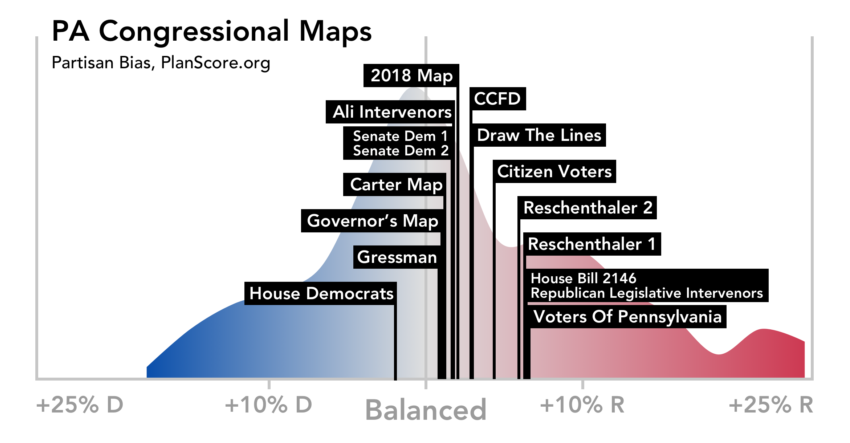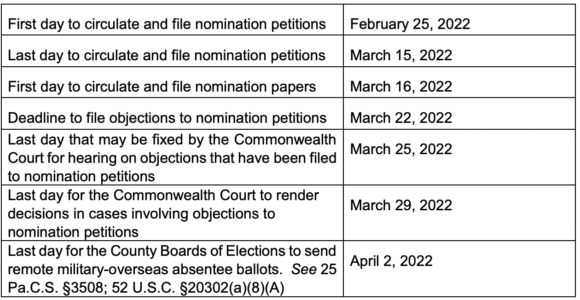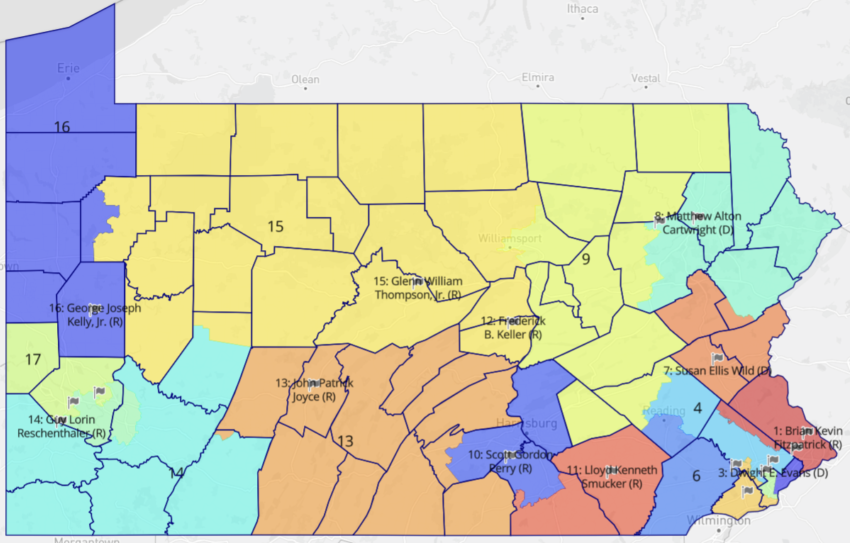PA Has a Congressional Map!
Just days after the February 18 hearing, the PA Supreme Court chose one of 13 submitted maps on February 13: the Carter plan, submitted by a group of initial petitioners.
Candidates for Congressional and statewide offices (governor, lieutenant governor and US Senate) can begin circulating nomination petitions on February 25. The primary date, May 17, remains unchanged.
The map is a good choice. It balances key metrics, has low partisan bias and only 2 maps do better on providing minority opportunity. Our top critique would be that it splits Berks County into 3 districts, as do many other submissions. We appreciate the work of the court and look forward to hearing more about their decision.
One feature that might have caught the court’s attention: the Carter map was closest to the 2018 map provided by the court in response to the LWVPA redistricting. Some districts remain almost unchanged. Only two incumbents are in the same district, in CD 15 in north-central PA, a region that saw significant population loss.
The decision makes clear that no deference is owed to a plan passed by the state legislature but vetoed by the governor. It also makes clear that partisan fairness metrics were at least part of the court’s consideration. The plan has a small pro-Republican bias, as was the case for all but one of the maps submitted. But it falls very near the center of the gray “balanced” zone, with less bias than most of the maps submitted by citizen groups and far less bias than the map passed and submitted by Republican legislators.

Explore the Map & More
- You can explore the map and metrics on Dave’s Redistricting App here.
- You can look for your own district and compare current to new districts at Pennsylvania.RedistrictingandYou.org Click on Congress at the top left of the slider, then select Court-ordered Carter Plan from the dropdown list at the top right.
- You can read the final Carter brief here and find all case documents here.
- To compare the Carter map to all other submitted maps, check our comparison spreadsheet
Legislative Maps
While the Court confirmed that the primary date will not change, the final timeline for PA House and Senate races is still in question. Two appeals, one brought by PA voters in Butler County, the other by Majority Leader Kerry Benninghoff, will be decided by the PA Supreme Court, along with any others, after a final deadline for Legislative Reapportionment Commission response on March 11.
- Current & LRC Map Metrics
- Quick link to House map
- Quick link to Senate map
- Compare all maps on our FDPA map page
The timeline for Congressional and statewide elections

